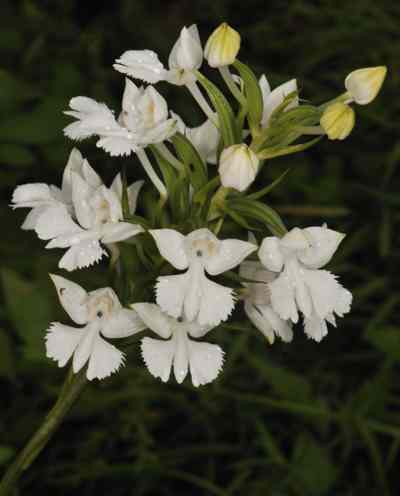Terrestrial. Whole plant about 35 to 80 cm in height. Lower part of stem sheathed, middle leafy and upper part bracteate. Leaves 4 to 6 cm long, oblong to elliptic, 5 nerved, sometimes 7 also, the base of the leaf narrowed into a long tubular sheath. Spike 4 to 8 cm long, laxly flowered. Sepals sub-equal, broadly ovate, acute, spreading, the lateral pair sub-erect. Petals narrowly oblong, sub-acute, curved inwards, shorter than the sepals. Lip as long as the sepals, variable in breadth, with large cuneate or rounded, fimbriate or crenate side lobes and a small oblong entire apical lobe. Spur infundibuliform at the base, slender laterally compressed, geniculte, sub-clavate below the knee, longer than the shortly stalked beaked ovary. Stigmas separated by the area in the centre by the orifice of the spur.

The Pursuit
The local people of the region had seen this plant in bloom and had admired its beauty for many years, to them this is the most attractive flower of their forest. I located a few places, where this species appears every season and was following it to document in bloom. Information came from local villagers that they found two plants with buds about to bloom, so I reached the area. The plants were on a height of about 800 ft on a steep hill. For seven continuous days I climbed up the hill only to see them in buds. As I have to document some other plants I decided to leave them behind and proceeded to the other location, thinking I will only see them in bloom the next season. To my surprise, on the drive home, all of a sudden, from the window of the moving vehicle, I spotted the species in full bloom on the road side. I got down on that deserted forest area to see six plants with four of them in full bloom. I have never experienced anything like that in my entire flower hunt, something I waited for long is right in front of me. I will never forget those moments as well as the 17 km trek I made after that to reach the nearest village!!!!